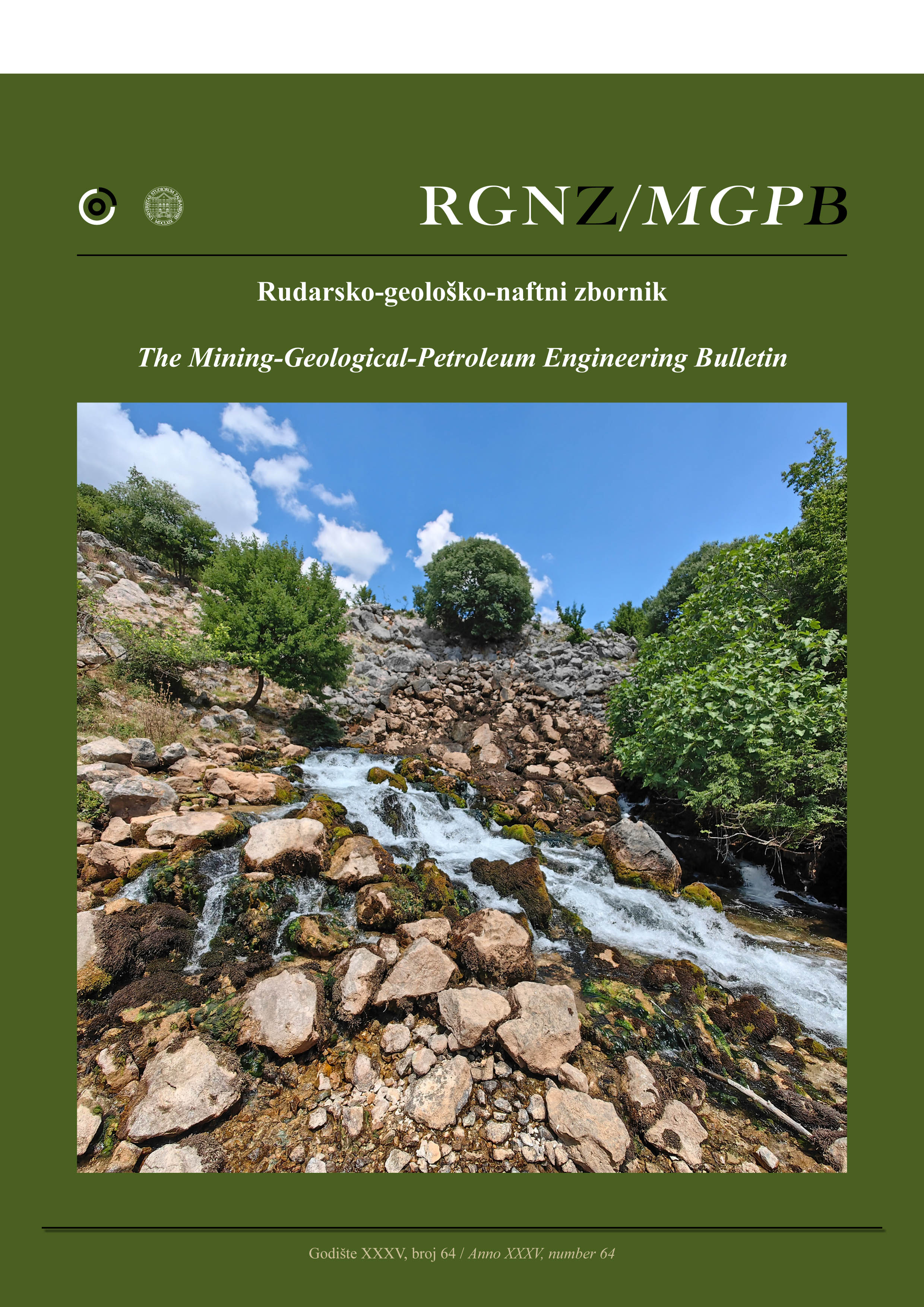Hybrid particle swarm optimization and grey wolf optimizer algorithm for Controlled Source Audio-frequency Magnetotellurics (CSAMT) one-dimensional inversion modelling
DOI:
https://doi.org/10.17794/rgn.2023.3.6Keywords:
CSAMT, nonlinear inversion, particle swarm optimization, grey wolf optimizer, hybrid algorithmAbstract
The Controlled Source Audio-frequency Magnetotellurics (CSAMT) is a geophysical method utilizing artificial electromagnetic signal source to estimate subsurface resistivity structures. One-dimensional (1D) inversion modelling of CSAMT data is non-linear and the solution can be estimated by using global optimization algorithms. Particle Swarm Optimization (PSO) and Grey Wolf Optimizer (GWO) are well-known population-based algorithms having relatively simple mathematical formulation and implementation. Hybridization of PSO and GWO algorithms (called hybrid PSO-GWO) can improve the convergence capability to the global solution. This study applied the hybrid PSO-GWO algorithm for 1D CSAMT inversion modelling. Tests were conducted with synthetic CSAMT data associated with 3-layer, 4-layer and 5-layer earth models to determine the performance of the algorithm. The results show that the hybrid PSO-GWO algorithm has a good performance in obtaining the minimum misfit compared to the original PSO and GWO algorithms. The hybrid PSO-GWO algorithm was also applied to invert CSAMT field data for gold mineralization exploration in the Cibaliung area, Banten Province, Indonesia. The algorithm was able to reconstruct the resistivity model very well which is confirmed by the results from inversion of the data using standard 2D MT inversion software. The model also agrees well with the geological information of the study area.
Downloads
Published
How to Cite
Issue
Section
License
Copyright (c) 2023 Hendra Grandis, Wahyu Eko Junian

This work is licensed under a Creative Commons Attribution 4.0 International License.
Creative Commons-BY
Authors who publish with this journal agree to the following terms:
In agreeing this form, you certify that:
- You read the ethical codex of the RGN zbornik available at journal web.
- You submitted work is your original work, and has not previously been published and does not include any form of plagiarism.
- You own copyright in the submitted work, and are therefore permitted to assign the licence to publish to RGN zbornik.
- Your submitted work contains no violation of any existing copyright or other third party right or any material of an obscene, libellous or otherwise unlawful nature.
- You have obtained permission for and acknowledged the source of any illustrations, diagrams or other material included in the work of which you are not the copyright owner.
- You have taken due care to ensure the accuracy of the work, and that, to the best of your knowledge, there are no false statements made within it.
- All co-authors of this submitted work are aware of, and in agreement with, the terms of this licence and that the submitted manuscript has been approved by these authors.
Publication licence
You retain copyright in your submitted work, according to journal license policy (CC-BY). By signing this form you agree that RGN zbornik may publish it under the publication licence. In summary the licence allows the following:
Anyone is free:
- To copy, distribute, display, and perform the work.
- To make derivative works.
Under the following conditions:
- The original author must always be given credit.
- The work may not be used for commercial purposes.
- If the work is altered, transformed, or built upon, the resulting work may only be distributed under a licence identical to this one.
Exceptions to the licence
In addition to publishing the work printed under the above licence, RGN zbornik will also enable the work to be visible online.
The journal editorial can change the licence rules anytime but it cannot retroactively restrict author(s) rights.


